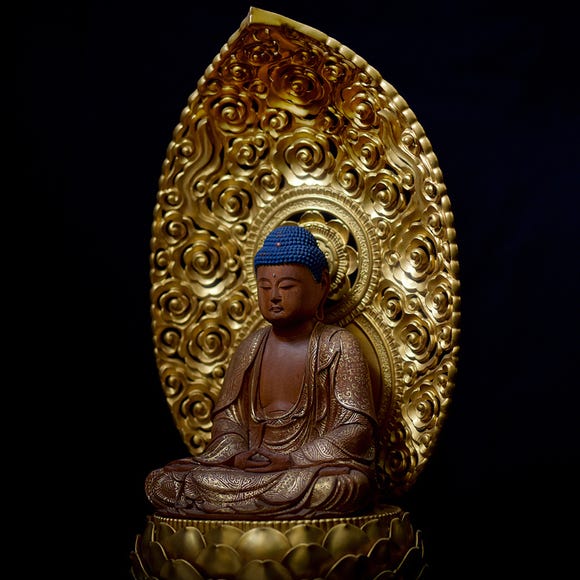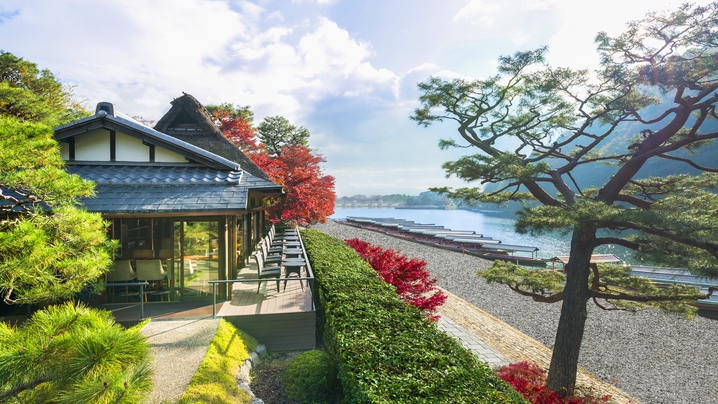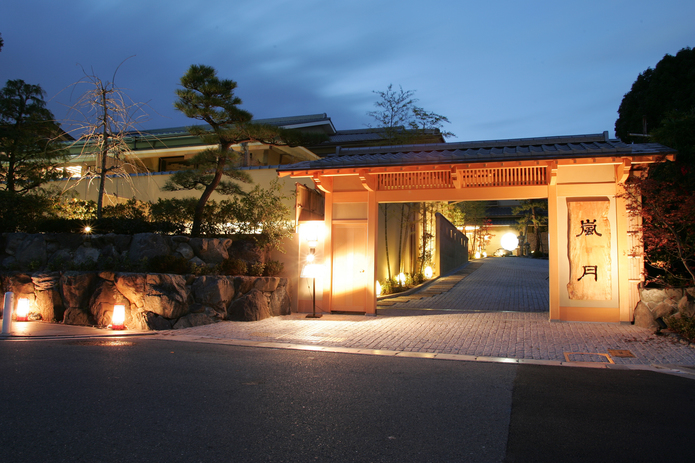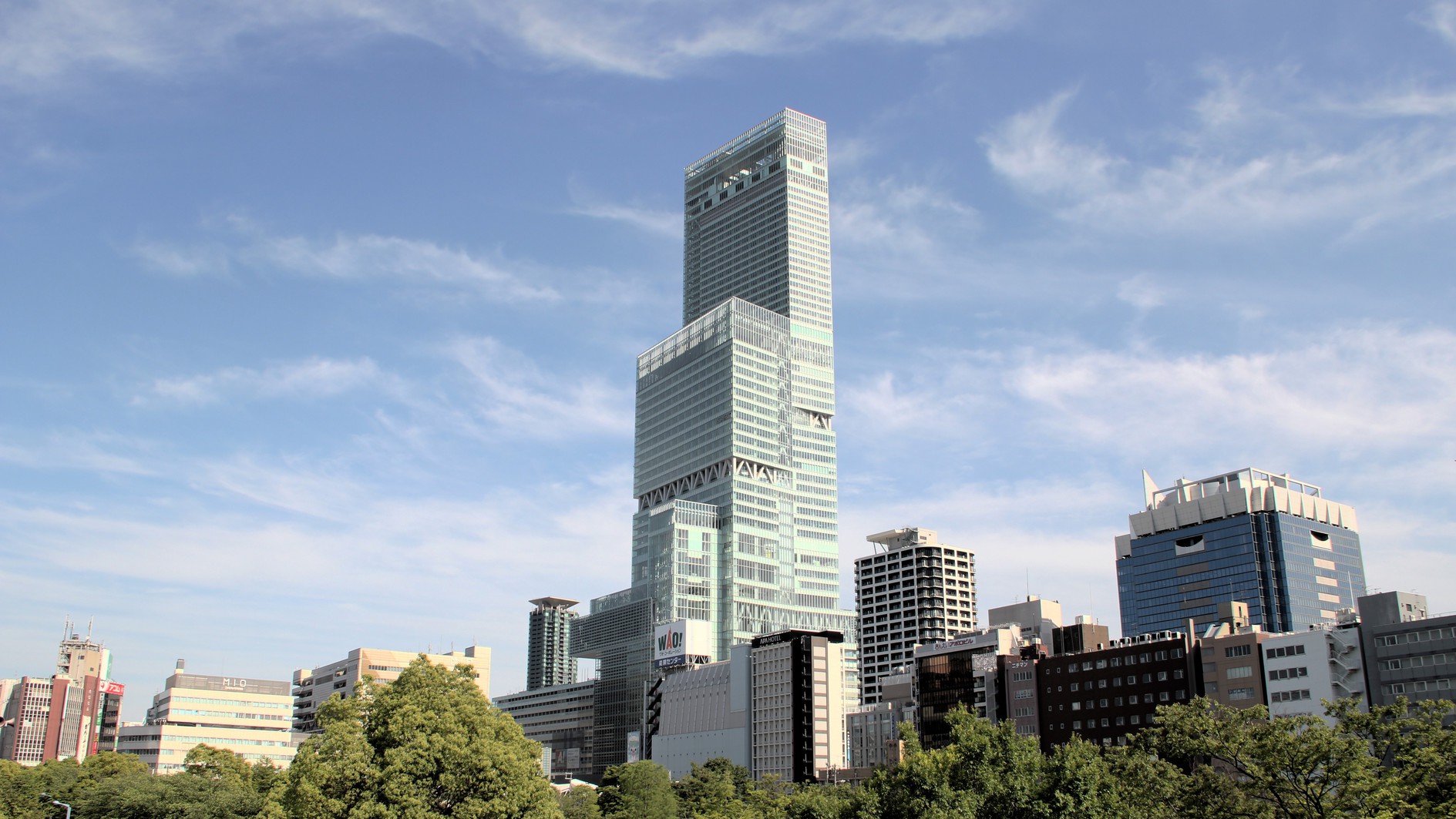
Etiquette in Japan: 'I Can’t Take a Photo Here?!' Top 5 Tips Tourists Always Forget in Kyoto
- Written by: Kaori Kimura
Tourist etiquette in Japan has been a major topic as the number of visitors to the country continues to surge. While there are certain manners that are expected of tourists throughout Japan, some areas have certain etiquette points they would like to see underscored.
Kyoto in particular is a popular tourist destination. It can be fun to sightsee in Kyoto, but there are some things you might not be aware of when touring the area.
Today we will learn about culture and Kyoto tourism manners to help you avoid accidental travel faux-pas and make the most of your trip!
- Table of Contents
-
- 1. “Don’t Chuck That Here!” Etiquette in Japan While Walking the Streets
- 2. “No Photos!” Etiquette in Japan for Sightseeing Spots and Tourist Facilities
- 3. “Be Respectful!” Visiting Shrines and Temples
- 4. “Are You Gonna Eat That?” Etiquette in Japan for Dining at Restaurants
- 5. “So Many Buttons?!” Using Public Toilets in Japan
- Extra: Etiquette in Japan when Carrying Large Luggage
- Enjoy Japanese Culture!
1. “Don’t Chuck That Here!” Etiquette in Japan While Walking the Streets

One of the great pleasures of sightseeing is enjoying local Japanese snacks while walking around. But the biggest thing to note here is littering, and where to place your garbage after eating.
There are many places in Japan without trash cans, and while some sightseeing spots, such as Shimizu and Arashiyama, do have plenty of trash cans positioned around the streets, many do not! A simple point of etiquette in Japan: don't ruin the scenery by tossing your trash just anywhere. It’s a pretty big inconvenience to the people who live there and have to clean up after your mess.
Some shops have in-store trash cans that let you toss your garbage after you’re done eating. Also keep in mind that in many places, eating and walking is prohibited in the first place, and some towns are kept tidy by locals who cannot stand to see litter on their streets.
Please protect the scenery and the environment, and hold on to your trash until you can properly dispose of it in a trash can!
How to prepare
An easy way to prepare for this is to have a small plastic trash bag in which you can collect all your refuse and then throw it out when you have the opportunity.

Smoking while walking and tossing cigarette butts on the ground are not only a violation of etiquette in Japan, but may also result in you being fined.
In Kyoto City, the Kyoto City Ordinance prohibits smoking on the streets and in outdoor public spaces, and is enforced throughout the entire city.
Specifically, high-traffic areas such as the city center, the Shimizu/Gion area, and the Kyoto Station area are designated as "fine collection zones" due to the higher risk of burns and accidents. If you are caught smoking on the street, city enforcement officers may charge you a fine of 1,000 yen.
Note that vaping is considered the same as smoking in Japan, and if you vape, you should do it in a designated smoking area as well.
Please use the designated smoking areas when smoking. In Kyoto, there are two smoking areas in the city center, 89 in the Kyoto Station area, three in the Gion and Shimizu areas, two in front of Yamashina Station, two in front of Nishioji Station, and one in front of Katsuragawa Station.
How to prepare
Portable ashtrays are sold at convenience stores and 100 yen shops. Buying and using one will make your life much more comfortable.
2. “No Photos!” Etiquette in Japan for Sightseeing Spots and Tourist Facilities

When visiting tourist attractions, be mindful not to block the roads by walking in large, spread-out groups or standing in one place for too long. It's also poor etiquette in Japan to talk too loudly. Naturally, you’ll be excited and might want to express that vocally, but please be aware of the people around you and try not to cause trouble with loud noises.
Another thing to be mindful of are the lines that form at tourist facilities. Japanese people are generally neat and orderly, and cutting in line is a strict taboo. Doing so can lead to misunderstandings, so to avoid ruining your trip, please make sure to check where lines begin before accidentally standing in the wrong spot.
Gion has implemented efforts to discourage unauthorized photography on private roads. There are large multilingual signs on the streets prohibiting photography on private roads. This is part of an effort by the local council to prevent nuisance behavior often referred to as “maiko paparazzi,” such as following maiko around or blocking the streets to take photos.
Gion was originally a very high-class place. There are even some shops that you cannot enter without a proper invitation. Maiko and geiko kimonos are also very expensive. Kyo-Yuzen kimono and Nishijin-ori woven belts are crafted with the best of techniques, and so high-quality that the women who wear them are sometimes called "walking crafts." Whatever you do, never touch or pull them, even casually! Acts such as pulling on someone's hand or clothing are punishable by law with up to six months in prison or a fine of up to 500,000 yen.
In recent years, foreign tourists have increased, and sightseeing spots across Japan have become more crowded. Public transportation, especially buses and subways, is particularly congested during peak seasons—spring when cherry blossoms are in full bloom and autumn when the leaves are at their most vibrant. For a more comfortable trip, and out of consideration for local residents, try to visit popular spots during off-peak hours, such as early in the morning or in the evening.
When trains or buses are crowded, or when viewing cultural properties at temples and shrines, it is considered good manners to carry your backpack in front of you.
3. “Be Respectful!” Visiting Shrines and Temples

Shinto shrines and temples are so photogenic, most people can't help but want to take a photo. However, remember that these are not sightseeing spots, but important places of worship that Japanese people have long since revered.
It is taboo to directly photograph figures of deities and of Buddha. There are also places that are not open to the public and where photography is prohibited, so look out for signs or notices. Finally, be sure to take off your shoes when entering the main hall of a shrine or temple. It is strictly forbidden to wear outdoor footwear on the tatami mats.
The popular Senbon Torii of Fushimi Inari Shrine has QR codes installed at nine locations around the precincts where you can listen to audio guidance in Japanese, English, Chinese, and Korean, that explain shrine etiquette. So there is no excuse not to mind your manners!
4. “Are You Gonna Eat That?” Etiquette in Japan for Dining at Restaurants

Next, let's learn etiquette in Japan for restaurants. Popular shops tend to generate long lines, so first, make sure to confirm where it begins and ends so you can line up at the back.
Anyone who occupies a seat in any restaurant is required to order at least one dish as a basic rule. Not ordering the equivalent number of dishes to people in your party, and bringing food from outside, are strictly forbidden.
Also, it may be fun to eat to your heart's content at an all-you-can-eat buffet, but it is considered bad manners to leave food behind.
In Japan, people say "Itadakimasu" before eating and "Gochisosama" when finished to show gratitude and appreciation for both the food and the people who prepare the meals. So, in order to show thanks and to avoid wasting food, please refrain from taking more food than you are sure you can eat at one time.
The sudden cancellation of reservations also contributes to wasted food. In some countries, reservations are only confirmed upon making a monetary deposit, but in Japan, you may be charged cancellation fees afterward.
Reservations are generally confirmed as soon as you call, and then the shop reserves your seats and the ingredients to be used for reserved guests. Sudden cancellations cause a huge inconvenience for any establishment, so please try to avoid canceling without prior notification as much as possible.
Finally, Japanese izakayas have what is called "otoshi" or "tsukidashi," which are small, individual dishes served at about 300-500 yen per person. These are automatically served and charged, similar to paying a table fee. It is also a consideration for the customers while they wait for their orders.
5. “So Many Buttons?!” Using Public Toilets in Japan

It is considered proper toilet etiquette in Japan to flush the paper when using toilets. In some countries or areas, toilet paper is disposed of in trash bins due to issues with sewage systems or the quality of toilet paper.
However, Japan's sewage facilities are well-maintained, so flushing paper down the drain is no problem. Also, throwing used toilet paper into the trash can is unsanitary and can cause odors, so please make sure to flush all papers used down the drain.
Finally, there are two types of toilets, Japanese and Western. Some have additional functions such as automatic flushing and a bidet function to wash the buttocks.
Kyoto City provides instructional drawings and stickers in public restrooms showing correct usage in multiple languages for tourists, so when in doubt, please refer to them!
Extra: Etiquette in Japan when Carrying Large Luggage

It’s not uncommon to see people sightseeing while carrying large bags or suitcases, but they can be difficult to roll along scenic cobblestone streets and roads, and can also cause noise disturbances.
Carrying bulky luggage on public transportation, such as buses and subways, can make the vehicle more crowded, potentially preventing others from boarding. Additionally, large bags might prevent you from taking a taxi or fully enjoying sightseeing, especially at temples and shrines in Kyoto, where there are many stairs.
In the Kansai region, including Kyoto, “hands-free sightseeing” is being promoted, where you send your luggage ahead to your accommodation or the airport using delivery services.
In addition to coin lockers at stations and luggage storage at hotels, JR Kyoto Station offers multilingual baggage services that can store your luggage temporarily and deliver it to your hotel.
Enjoy Japanese Culture!
Kyoto City is raising awareness of and accessibility to multilingual support for foreign tourists, both on websites and around the city. They are also installing additional signboards and flyers in other languages.
There is a saying, “When in Rome, do as the Romans do.” This means that, even if things differ from your own values, you should adapt to the customs of the place or group you’re in. By understanding Japanese culture and etiquette, you can enjoy a deeper, more enriching experience while sightseeing in Kyoto.
Additionally, the official Kyoto City Tourism Association website offers a guide called “Kyoto Machiketto,” which summarizes basic manners you should know when visiting Kyoto. Be sure to read it before your trip!
*The information in this article was updated in March 2025 at the time of publication. For the latest information, please refer to the official website.
Kaori Kimura is a Japanese travel writer with roughly 20 years of experience in editing and publishing travel guides. After graduating from university, she worked at a publishing company for about 10 years, specializing in travel guides. She has undertaken numerous assignments both internationally, including in places like Paris, France, and Taiwan, as well as domestically in areas such as Hokkaido and Kyushu. Following this, she lived in Guangzhou, China for about two years as an expatriate spouse and contributed to local media, writing on economics and travel guides. Upon returning to Japan, she gained experience in editing and writing for web media. A key strength of hers is her involvement in creating travel guide articles for both inbound and outbound tourism. She possesses the highest level (HSK-6) of the standardized Chinese language proficiency test, level 2 in Japan's French language test, and EIKEN Grade Pre-1.
*Prices and options mentioned are subject to change.
*Unless stated otherwise, all prices include tax.
Recommended places for you
-
Events

Sunflower terminal (Osaka) Terminal 1
Other Sightseeing
USJ, Nanko Port
-
Events

Osaka JOINER
Other Sightseeing
Namba, Dotonbori, Shinsaibashi
-

Kanzenkoshitsuyakinikutabehodai Gyugyu Paradise Sannomiya
Yakiniku
Kobe, Sannomiya, Kitano
-

ISHIDAYA Hanare
Yakiniku
Kobe, Sannomiya, Kitano
-

Jukuseiniku-to Namamottsuarera Nikubaru Italian Nikutaria Sannomiya
Izakaya
Kobe, Sannomiya, Kitano
-
Goods

Yoshida Gennojo-Roho Kyoto Buddhist Altars
Gift Shops
Nijo Castle, Kyoto Imperial Palace
-

Enjoy Dreamy Plum Blossoms at Suzuka Forest Garden: A Lesser-Known Spring Treasure in Mie Prefecture
-

2025 Osaka-Kansai Expo: Convenient Tips for a Stress-Free Visit
by: Kaori Kimura
-

A Special Stay at Hotel Okura Kyoto: Sakura and Gion Festival at Your Doorstep
by: Yotsuka Hizuki
-

Things to Do in Osaka & Kyoto in March 2025: Anime Events, Plum Festivals & More
by: Kaori Kimura
-

Osaka-Kansai Expo 2025: 7 Must-See Exhibits at the Future of Life Pavilion
by: WESTPLAN
-

What to Do in Osaka & Kyoto in April 2025: Enjoy Japan's Exciting Spring Events
by: Kaori Kimura
Inspiration for Accommodations
-

Spacious Family Hotel in Namba: 20 Comfortable Stays for Family Fun
-

Charming Hotels to Enjoy the Spectacular Views of Arashiyama's Autumn Leaves from Your Room
-

Experience Stunning Views of Osaka Castle from Private Spaces: Top Hotels Near Osaka Castle
-

Recommended by Visitors! Arashiyama's Best-Rated Hotels
-

Family-Friendly Universal Studios Japan Hotel with Excellent Access
-

Enjoy a Comfortable Stay in Osaka! 10 Hotels with Convenient Airport Shuttle Services
-

Top 10 Recommended Hotels Near Namba Station with Great Access
-

Enjoy Night Views from Your Room! Recommended Hotels in Namba Area
-

Kichijoji – Explore Tokyo’s Top-Rated Stylish Suburb in Half a Day!
-

Dining in Kyoto: Best Restaurants for Kaiseki, Sushi, Cafes & More
-

Self-Guided Kyoto Bike Tour: Must-See Places in Arashiyama!
-

Complete Guide to Kyoto Tower: Great Food, Shopping, and Hotel In Japan's Culture Center!
by: WESTPLAN
-

Kansai Region in a Nutshell: A 4-Day Itinerary to See the Top Attractions in Kyoto, Osaka, Nara, and Kobe
by: WESTPLAN
-

5 Amazing Kyoto Festivals You’ll Want to Experience During Your Next Trip
- #best gourmet Osaka
- #things to do Osaka
- #what to do in kyoto
- #what to bring to japan
- #best gourmet Kyoto
- #new years in Osaka
- #what to buy in nanba
- #Visiting Osaka
- #onsen tattoo friendly arima
- #daiso
- #Visiting Kyoto
- #best japanese soft drinks
- #japanese fashion culture
- #japanese convenience store snacks
- #japanese nail trends


















